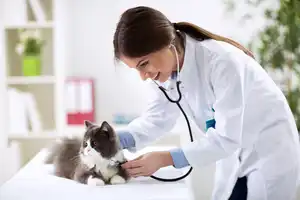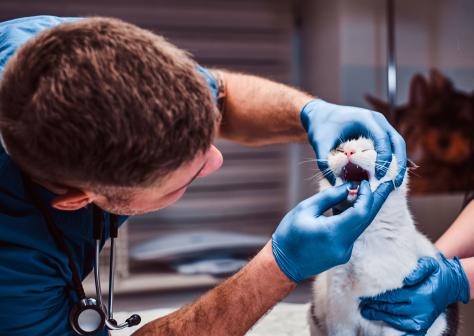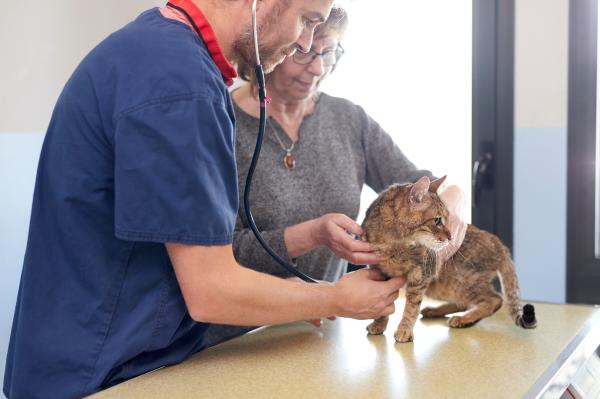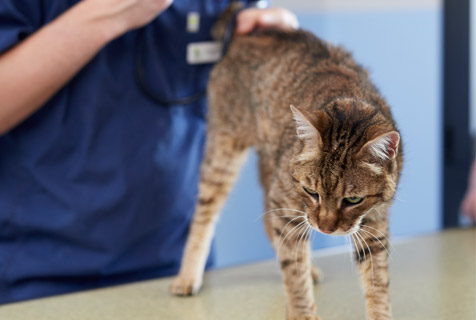Cat Kidney Health
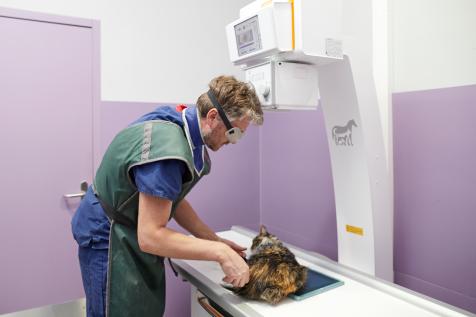
The kidneys serve important functions in the body. Not only do they filter blood, but they also help control blood pressure, make hormones and enzymes, and regulate essential minerals such as potassium and sodium. The functional unit of the kidney is made up of glomeruli and their associated tubules. Urine is formed when the glomerular filtrate passes through the tubule into the bladder.
Disease of the Kidney
Chronic kidney disease (CKD) is the persistent loss of kidney function over time. CKD is defined as kidney damage present for at least 3 months, with or without decrease in glomerular filtration rate, or greater than 50% reduction in GFR persisting for at least three months. Some kidney disease is familial but it can also be caused by things such as injury, infection, toxins, cancer, and uroliths and/or obstruction. CKD is the most common disease affecting the kidney of cats, especially middle aged and older cats.1
Nephroliths and Uroliths
Stones of the urinary tract are not uncommon in cats and these may occasionally be found in the kidney or may cause obstruction. General recommendations are to increase water consumption to keep the urine dilute. Manipulation of the urine pH may be helpful depending upon the type of minerals in the stone. Some foods are also formulated to help decrease the incidence of urinary tract stones.
Diagnosing Chronic Kidney Disease
The terms "chronic kidney failure" or "chronic renal failure" do not mean that the kidneys have stopped working. There is no uniform agreement on the specific definitions, so the International Renal Interest Society (IRIS)2 developed a scheme to classify the severity of CKD into four stages. The first staging is based on the concentration of fasting blood creatinine. Further evaluation includes blood pressure and the presence of proteinuria.
Step 1
There may be no clinical signs of chronic kidney disease at first as the kidney has a large reserve capacity. Early signs of drinking more water and urinating more are often not noticeable. As the disease progresses signs of weight loss, decreased appetite, lethargy, dehydration, and vomiting become more apparent. At the early stages the physical examination findings may be normal. The first abnormal physical exam findings include palpable kidney abnormalities, evidence of weight loss, and hypertension. If blood chemistry evaluations reveal a fasting blood creatinine or SDMA elevation level or both, the cat should be staged with CKD.
Step 2
Staging of CKD uses five clinical and laboratory factors to help guide veterinarians in evaluating severity of CKD and development of appropriate treatment and monitoring regimens. The five elements and four Stages are outlined in the table below. Measuring fasting blood creatinine and/or fasting blood symmetric dimethylarginine (SDMA) on at least two occasions in a hydrated, stable patient forms the starting point for this process. Substages are based on proteinuria and blood pressure. The patient should be re-evaluated over time and moved to different stages as needed.
Feline -IRIS Staging of CKD2
|
|
Stage 1 |
Stage 2 |
Stage 3 |
Stage 4 |
|
Blood urea nitrogen |
No azotemia |
Mild azotemia |
Moderate azotemia |
Severe azotemia
|
|
Creatinine (mg/dL) |
< 1.6 |
1.6-2.8 |
2.9-5.0 |
> 5.0 |
|
Symmetric dimethylarginine (SDMA սg/dL |
< 18 |
18-25 |
26-38 |
>38 |
|
Urine Protein Creatinine Ration (UPC) |
Nonproteinuric <0.2 |
Borderline proteinuric 0.2–0.4 |
Proteinuric >0.4 |
|
|
Systolic Blood Pressure mmHG |
Normotensive <140 |
Prehypertensive 140-159 |
Hypertensive 160-179 |
Severely Hypertensive ≥ 180 |
Nutrition plays an important role in managing CKD in cats. Therapeutic foods are designed to sustain adequate nutrition, control the clinical signs associated with accumulated waste products, minimize problems with fluid and mineral balance, and modify or slow the progression of CKD. Supplements may also be helpful to aid in mineral balance. It's also important to remember the connections between good dental health and many other organ systems, such as the kidneys.
References:
- Chronic Kidney Disease, Part 1: Overview. Hutchinson D, Forrester SD, Rollins AW, et al. Clinician’s Brief.
- http://www.iris-kidney.com/guidelines/staging.html


